The Sunset Limited (3)
Thursday December 26
Drawn by the promise of beautiful buildings and streets uncrowded with tourists, this morning we head for the Garden District, a section of the City in the opposite direction from the French Quarter, upriver and “Uptown.” The St. Charles St. streetcar takes us there along the wide tree-lined median traditionally known as “neutral ground.” Its varnished wooden seats and thick painted steering handle bring me back to the noisy trolleys I loved to ride on Broadway and Dyckman Street in New York before we got a car and moved to the suburbs in 1950.

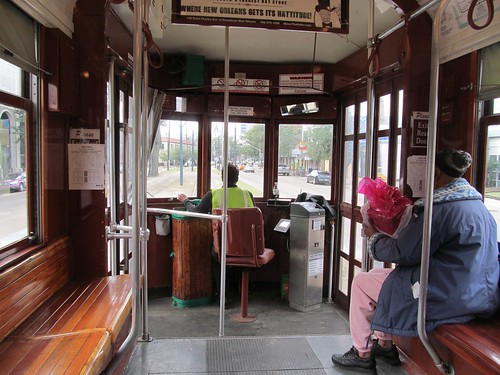

Relying on the information available on our phones instead of getting an adequate guidebook to the City was a mistake, but we know enough to find the cross street leading to a breakfast place kitty-corner from the the centrally located Lafitte Cemetery.

The trees along the boulevard are festooned with beads and we realize that this must be a main parade route of the Mardi Gras whose influence remains here all year long.
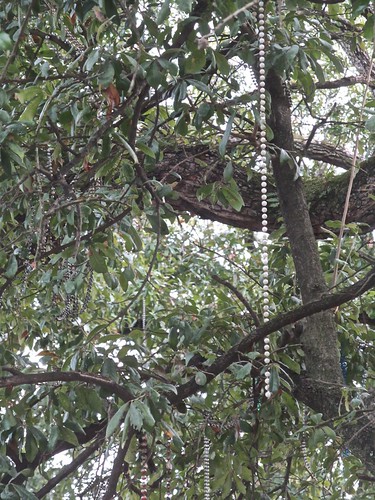
Though Gustave had referred to it contemptuously as a mini-mall, the coffee shop here is warm, welcoming and full of cosmopolitan looking residents.
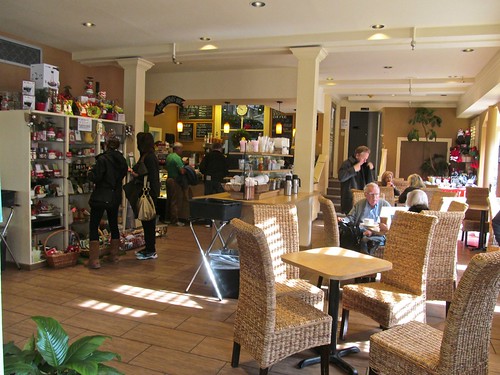
Fortified by a bagel and cup of the local café au lait, whose flavor is strengthened by the addition of chicory, we explore the cemetery, which features multigenerational crypts and stacked stone graves.
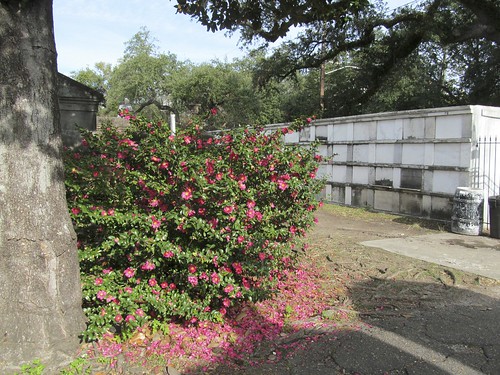
The puddles in the walkways demonstrate why bodies are not buried in this city and the need for a specialized technology to keep them where they’ve been placed. The remnants of a shredded blue tarp and a dilapidated entry building show that even in this ritzy part of town, Katrina still leaves traces.

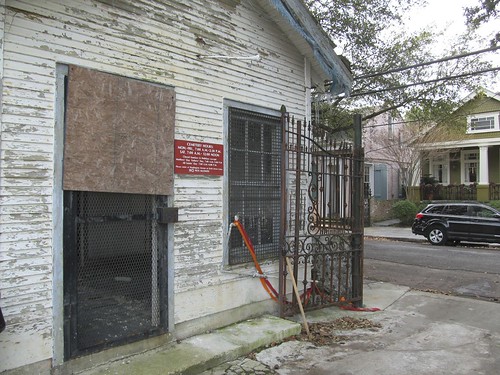
Now we walk along streets tunneling through the oak canopy of this real urban forest admiring the elegant and varied architecture and marvelling at the challenge of upkeep of both plants and structures in this corrosive tropical climate.
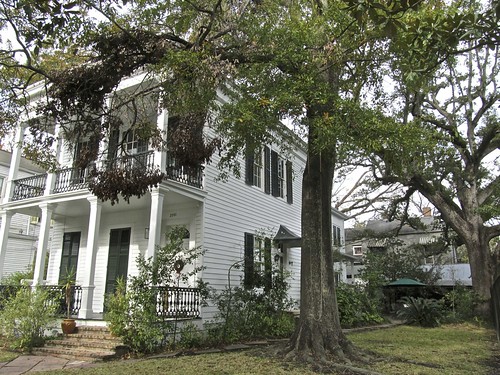
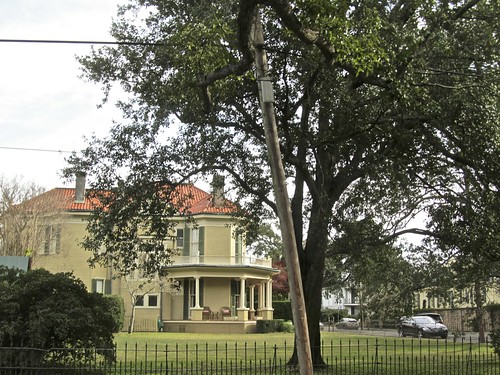
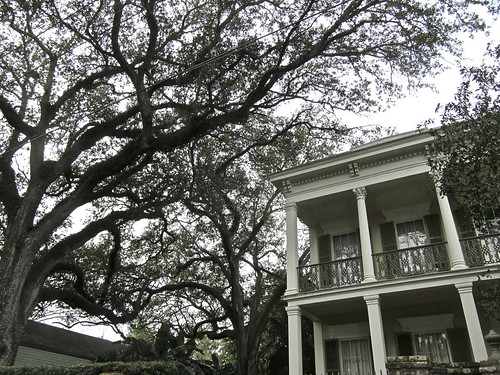
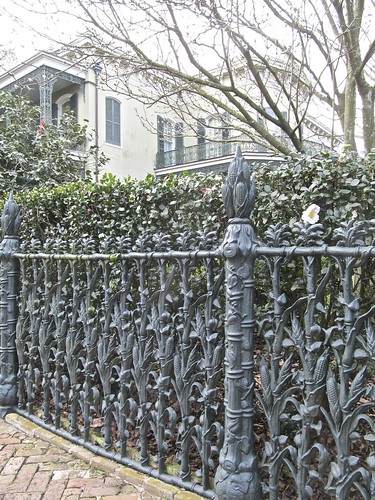

At a corner of more modest houses, an amiable man sweeping the steps talks to us about the joys of living here, the regeneration of many sections of the City after Katrina, the satisfaction of gutting and refurbishing his young family’s home.

Needing a rest we head back to the minimall, where we find a bookstore next to the coffee shop offering a selection of works about New Orleans. Rather than a conventional guide, I find a recent volume called The Unfathomable City, by Rebecca Solnit, whose name I recognize as a powerful writer for Orion magazine. Billed as an atlas, the book consists of 22 beautifully designed and annotated maps accompanied by essays categorizable as cultural geography or place studies. Each has its own stylistic flair and dissident political slant. This book could provide an initiation to many of the City’s mysteries hidden from us three-day visitors. Exploring it during our rest periods and on the train ride back home feels like extending our stay.
Back on St. Charles Street, while waiting for the trolley, I snatch a little Mardi Gras by climbing a tree and grabbing some beads. We check out of La Pavillon and move into Le Mazarin hotel, located in the middle of the French Quarter. It’s comfortable but expensive and disappointing by comparison. We walk a new route to Jackson Square and find a table for late lunch at Muriel’s, whose setting, décor, service and distinctive Creole cuisine live up to its reputation.
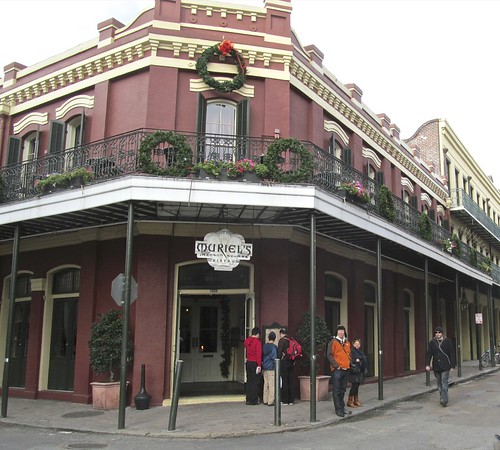

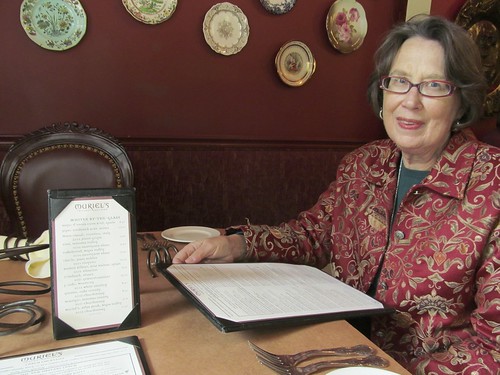
After a late siesta, Jan remains in the hotel and reads while I take another trolley up and down Canal Street, too late for the ferry but not for encountering some loud and scary characters in the terminal. More wandering fails to discover any of the music venues I’d been hoping to come across.
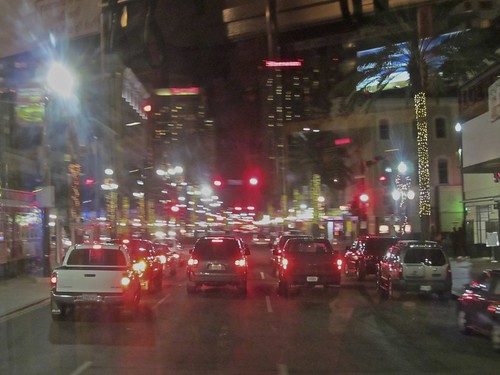
Instead I’m repulsed by the huge complex of Harrah’s Casino at the foot of Canal street, its valet-parking drop-off crowded with Cadillacs and fancy pickup trucks, evidence, I assume, of Las Vegas colonization.
For more and full-size pictures, click here
